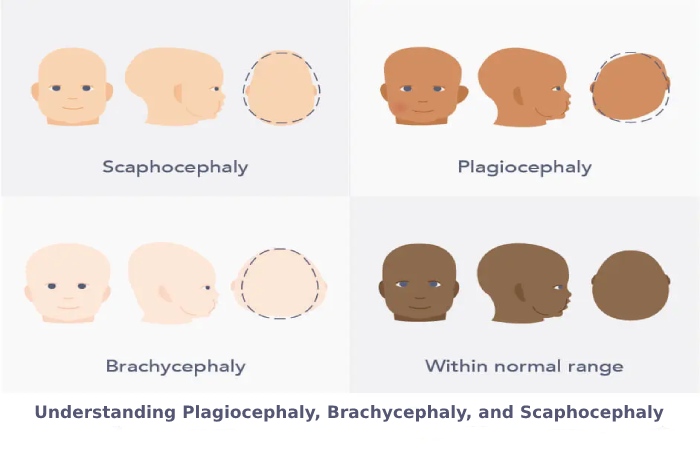Table of Contents
About Cranial Technologies
Cranial Technologies is the only corporation to research, diagnose, and treat plagiocephaly, commonly called flat head syndrome. With over 300,000 babies successfully treated, we are the plagiocephaly experts.
Many centers are staffed with advanced-practice clinicians who are Physical and Occupational Therapists, Orthoptists, and RNs, all treating babies as their focus. This highly-trained group monitors developmental milestones and provides education and counseling to parents. Each patient’s treatment with a custom-designed and manufactured cranial orthotic, the DOC Band, is observed and modify to ensure optimal outcomes. Schedule your free evaluation today
Research and Literature
Cranial Technologies remains at the forefront of research on the prevention and treatment of plagiocephaly. Our investigators have published extensively in peer-reviewed medical journals and presented papers at national and international medical conferences. In addition, Cranial Technologies maintains the world’s largest database of plagiocephaly deformations and sponsors research studies investigating the cause and prevention of plagiocephaly.
Cranial Technologies began conducting research in the mid-1990s in response to the lack of significant research on the subject at the time. Cranial Technologies’ research efforts intensified when the DOC Band became the first cranial orthosis to go through the FDA approval process. With no other FDA-approved products on the market at the time, extensive research was require to demonstrate the need, safety, and patient outcomes of the DOC Band®. As a result, many competitive cranial orthopedic products on the market today may exist due to the research efforts of Cranial Technologies.
A recent study examines the effectiveness of the DOC-Band for treating moderate and severe Brachycephaly; see full article here.
Understanding Plagiocephaly, Brachycephaly, and Scaphocephaly

Sometimes known as a flat head syndrome, plagiocephaly (definite play-jee-oh-sef-uh-lee) is a relatively communal condition where an new-born develops a flat spot on the back or backside of the Head. Many factors can cause flat defects. For example, a baby’s skull is very soft, and pressure from everyday surfaces, such as beds or car seats, can cause flattening.
About Plagiocephaly
Plagiocephaly means oblique Head (starting Greek “plagio” meaning oblique and “cephalic” meaning head). The baby’s head shape looks like a parallelogram from overhead. Parents and medical professionals can air for these features:
- The Head is level on one side
- One ear is extra forward than the other one
- One eye is lesser than the other one
- One cheek is fuller than the other one
- The top of the Head is not level
- The Head shape resembles a parallelogram from above
About Brachycephaly
Brachycephaly is fixed in Latin, “brachy,” meaning short, and “cephalic,” meaning Head. The back of the Head turns flat, producing an abnormally extensive, tall head form. Parents and medical specialists should look for these characteristics:
- The Head is more comprehensive than normal
- The Head is abnormally tall
- The back of the Head is level rather than curved
- A face appears small relative to the size of the Head
- The widest part of the Head is just above the ears
- Tips of ears protrude
- The Head shape resembles a trapezoid from above
What does Brachycephaly with Plagiocephaly Look Like?
As you might expect, children with Brachycephaly and Plagiocephaly share features of both head shapes. In these circumstances, the Head is abnormally tall and wide and look like a slanted trapezoid from overhead. These are the traits family’s and doctors can look for.
- A mixture of plagiocephaly and Brachycephaly traits
- The head is more comprehensive and taller than normal
- Forehead is flat
- Ears and eyes appear misaligned
- The Head shape resembles a distorted trapezoid from above
Cranial Implants
Personalize medical devices are made of three highly biocompatible materials focused on treating trauma or cranial diseases.
Custom cranial implants are personalized medical devices design from each patient’s medical images. Both design and manufacturing are carried out using computer-aided engineering, design, and manufacturing software (CAE/CAD/CAM). They can be obtain in 3 highly biocompatible materials: Titanium Grade 5 (alloy Ti6AI4V – Titanium G5), Polymethylmethacrylate (PMMA), and Polyetheretherketone (PEEK).
Custom cranial implants are used in cases that involve partial resection of the skull and, after treatment of these traumas or diseases (of oncological or congenital origin), require a new surgery to replace the bone remove by an implant (cranioplasty) to correct the deformation.
Conclusion
Assessors were reliable and interchangeable. In this significant clinical context, results indicate that educating child health care nurses to assess infant cranial asymmetry can be used for early detection. Agreement measure, child health centers, infant cranial asymmetry, nonsynostotic plagiocephaly, nursing assessment, reliability
Also Read: GTE Technology – Launch, Benefits, Investment, and More in 2022
